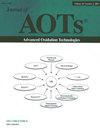Mechanistic insight on the sonolytic degradation of phenol at interface and bulk using additives
Q Chemistry
引用次数: 4
Abstract
Abstract Present work investigated the degradation of phenol based on theoretical knowledge of bubble dynamic and experimental studies. Optimum parameters of theoretical knowledge such as initial concentration of phenol: 1.1 mole/L; concentration of additive: 2 g/L; liquid medium temperature: 35°C and pressure of liquid medium: 101325 Pa were considered for the experimental study. The degradation was further explored in the presence of zinc oxide (effect of particle size), hydrogen peroxide (effect on hydroxyl radical concentration), and sodium chloride (effect of a change in liquid properties) and its effect on degradation of phenol. The degradation of phenol increased in the presence catalyst such as 0.61±0.013 moles L-1 min-1 (hydrogen peroxide), 0.44±0.014 moles L-1 min-1 (zinc oxide), and 0.5±0.013 moles L-1 min-1 (sodium chloride) compare to the absence of catalyst 0.24±0.009 moles L-1 min-1. The results confirmed that maximum degradation of phenol obtains in the presence of hydrogen peroxide (cavitational yield: 15.9×10-5 mg/J, the rate constant: 4.8×l0-5 min-1, and TOC removal 28.5%). The presence of sodium chloride showed the considerable effect on degradation and TOC removal. Results confirmed that the degradation of phenol is driven by the hydroxyl radicals’ mechanism and increased with increase in the concentration of hydroxyl radicals. The degradation of phenol was highly dependent on the concentration of phenol near vicinity of the liquid-bubble interface.添加剂在界面和本体处对苯酚的声溶降解机理的研究
摘要:本工作基于气泡动力学的理论知识和实验研究,对苯酚的降解进行了研究。理论知识的最佳参数如苯酚初始浓度:1.1 mol /L;添加剂浓度:2g /L;实验研究考虑液体介质温度为35℃,液体介质压力为101325 Pa。进一步探讨了氧化锌(粒径的影响)、过氧化氢(对羟基自由基浓度的影响)和氯化钠(对液体性质变化的影响)对苯酚降解的影响。与无催化剂(0.24±0.009 mol L-1 min-1)相比,在催化剂(0.61±0.013 mol L-1 min-1)(过氧化氢)、0.44±0.014 mol L-1 min-1(氧化锌)和0.5±0.013 mol L-1 min-1)(氯化钠)存在时,苯酚的降解率提高。结果表明,在双氧水的存在下,苯酚的降解效果最好(空化率15.9×10-5 mg/J,速率常数4.8×l0-5 min-1, TOC去除率28.5%)。氯化钠的存在对降解和TOC的去除有相当大的影响。结果证实苯酚的降解是由羟基自由基驱动的,并随着羟基自由基浓度的增加而增强。苯酚的降解高度依赖于液泡界面附近的苯酚浓度。
本文章由计算机程序翻译,如有差异,请以英文原文为准。
求助全文
约1分钟内获得全文
求助全文
来源期刊
CiteScore
0.88
自引率
0.00%
发文量
0
审稿时长
1 months
期刊介绍:
The Journal of advanced oxidation technologies (AOTs) has been providing an international forum that accepts papers describing basic research and practical applications of these technologies. The Journal has been publishing articles in the form of critical reviews and research papers focused on the science and engineering of AOTs for water, air and soil treatment. Due to the enormous progress in the applications of various chemical and bio-oxidation and reduction processes, the scope of the Journal is now expanded to include submission in these areas so that high quality submission from industry would also be considered for publication. Specifically, the Journal is soliciting submission in the following areas (alphabetical order): -Advanced Oxidation Nanotechnologies -Bio-Oxidation and Reduction Processes -Catalytic Oxidation -Chemical Oxidation and Reduction Processes -Electrochemical Oxidation -Electrohydraulic Discharge, Cavitation & Sonolysis -Electron Beam & Gamma Irradiation -New Photocatalytic Materials and processes -Non-Thermal Plasma -Ozone-based AOTs -Photochemical Degradation Processes -Sub- and Supercritical Water Oxidation -TiO2 Photocatalytic Redox Processes -UV- and Solar Light-based AOTs -Water-Energy (and Food) Nexus of AOTs

 求助内容:
求助内容: 应助结果提醒方式:
应助结果提醒方式:


